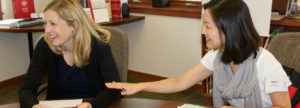Teaching Theology and Religion
Article Appendices
The following articles, published in Teaching Theology and Religion, have additional materials collected into one or more appendices for which there was not space in the print version of the article.
Teaching Creation: A Modular Approach
David Bosworth
Teaching Theology and Religion 10:4 (October 2007) 231–234
Read full text (Subscription restrictions may apply.)
This article describes a modular approach to teaching Genesis 1–3 that values depth over breadth even in an introductory class. The module allows students to learn about the text and its original context by orienting discussion around contemporary issues of practical concern. Specifically, the creation-evolution debates provide an opportunity for students to learn about the ongoing lives of Genesis 1–3. The conflict of traditional and modern values emerges also in issues surrounding gender and autonomy in Genesis 2–3. This pedagogical approach challenges various student worldviews to promote discussion and greater intellectual sophistication. The correlation of the text with ongoing contemporary issues engages student interest and motivates learning. It also allows the class to explore both the ancient text and its interpretation in diverse communities. Finally, the module allows for considerable flexibility for student and teacher interest and the needs of a given class.
Appendix 1 A schedule of possible readings, assignments, and lesson plans (pdf)
Appendix 2 Selections from ancient commentary on Genesis 2–3 from scattered sources (pdf)
Appendix 3 A bibliographic essay noting the usefulness of selected resources related to the module (pdf)
The Syllabus as Passport into a Common Culture of Teaching and Learning: Developing and Assessing Strategies for Dealing with Diversity
Barbara Green, O.P. and Martha Stortz
Teaching Theology and Religion 9:4 (October 2006), 221-228
Read full text (Subscription restrictions may apply.)
Finding themselves teaching to increasingly diverse student populations, two mid-career faculty from different disciplines embarked on a common voyage to make their foundational courses more sensitive to student learning styles. Adrift in the seas of multiple intelligences and multiculturalism, the researchers quickly abandoned any hope of developing distinctive teaching portfolios for individual learning profiles. Instead, they structured the syllabus to be the passport into a common culture of teaching and learning in the classroom. Syllabus design and on-going “spot” assessments proved trusty guides in re-centering learning on the students’ needs. In the process of outlining these two strategies for creating a common culture of teaching and learning, the article offers testimony that old dogs can learn new tricks!
Appendices of additional materials, including syllabi used in these courses and in class assessment tools.
Appendix 1 Excerpt from Syllabus, re: “Why History Matters to the Present” (pdf)
Appendix 2 Syllabus: “Introduction to Christian Ethics” (pdf)
Appendix 3 “Personal characteristics that influence learning”( pdf)
Appendix 4 “Focus questions on Elijah and the royal family” (pdf)
From Sole Learning to Soul Learning
Gayle R. Baldwin
Teaching Theology and Religion 9:3 (July 2006), 165-174
Read full text (Subscription restrictions may apply.)
Is it effective or even possible to teach an introductory course in religious studies that not only provides first-year university students with the fundamental vocabulary, concepts, and critical tools of religious inquiry, but also invites and stimulates the transformation of the religious imagination? In what kind of teaching and learning method could the process of personal transformation occur and how might one assess it? These are the questions that led to an experiment in teaching religion the objective of which was to prepare beginning students for the academic approach to religion and, at the same time, transmit the experience of learning as an embodied process that engages personal narrative within a community context. This essay is based on a three-year project that has made considerable progress in meeting these goals and answering these questions.
Appendix A
Appendix B
Appendix C
Examples
Approaches to Jewish Studies: Teaching a Methods Class
Leah Hochman
Teaching Theology and Religion 8:2 (April 2005), 78-85
Read full text (Subscription restrictions may apply.)
Like religious studies, Jewish studies is an academic exploration of literature, ritual, history, philosophy, and experience across disciplinary boundaries. As with all area studies, Jewish studies balances itself – often precariously – as a bridge across that range of methodological options. The breadth of theories employed by each has complicated the teaching of an upper level seminar in Jewish studies. Conceived as a cross between a parade of scholars course and a senior capstone experience, the class employed the broad thematic principle of “identity.” In doing so, it exposed the biases of the students, the subject, and the instructor.
Appendix 1
Handling Doubt in Teaching Religion: A Turkish Case Study
Uzeyir Ok
Teaching Theology and Religion 7:4 (October 2004), 201-212
Read full text (Subscription restrictions may apply.)
This study ventures to sketch the dimensions of stress in religious thinking among young Muslims studying theology in Turkish universities and the ways in which these tensions are handled in educational institutions. As a result of a review of related literature, together with the use of a questionnaire with 382 respondents and interviews with 15 participants, the extent of experienced intense religious stress, the source, the content, the ways of resolution, the duration, and the period of religious stress were identified. Finally, the cognitive, educational, theological, and socio-cultural challenges to which young Muslims were exposed were delineated and possible ways to overcome these problems were outlined, with some suggestions for educational settings.
Appendix
Facilitating the Academic Success of International Students
Amy Spencer
Teaching Theology and Religion 6:3 (July 2003), 164-168
Read full text (by subscription)
International seminarians seeking an education at academic institutions located in the United States often face a host of learning challenges. Seminary faculty that teach in these institutions are often confronted with a need to adjust their teaching methods to facilitate learning by international students. This essay outlines specific strategies to facilitate academic success of international seminarians by offering specific teaching methods for faculty and learning strategies for international students. Topics include training faculty in how to respond to diverse learning styles, expanding learning environments beyond the classroom, methods for enhancing student participation, and development of assignments. Strategies for student success include developing skills in how to improve note taking, critical reading, and writing.
Teaching Tips (pdf)
Assessment for the Right Reason: The Ethics of Outcomes Assessment
Fred Glennon
Teaching Theology and Religion 2:1 (February 1999), 14-25
Read full text (Subscription restrictions may apply.)
This essay explores and challenges the two primary ethical arguments for assessment, accountability, and professional responsibility by demonstrating their strengths and exposing their weaknesses, which are rooted in their limited notions of community, contract, and guild, respectively. In contrast, I argue for assessment on the basis of an ethic of covenantal obligation which incorporates both accountability and responsibility but grounds them on a broader view of community, a view of the teaching-learning environment as a covenant community replete with mutual obligations and responsibilities, one of which is assessment. While the notion of covenant community has deep roots in American society, its theological underpinnings make the ethic of assessment as covenant obligation most relevant to church-related institutions of higher education, the context in which I teach and learn. I conclude the paper by delineating some principles for ethical assessment practice which follow from a covenantal perspective.
Spring Survey (pdf)
Fall Survey (pdf)
The Bible in African American Perspectives
Alice Ogden Bellis
Teaching Theology and Religion 1:3 (October 1998), 161-165
Read full text (Subscription restrictions may apply.)
This modified “note from the classroom” is a dialogue between two scholars about African American study of the Bible. Bellis introduces the subject by advocating the primacy of social location and the African American student’s religious experience in the method that she uses in her classes. Brown’s response takes a different stance with regard to the relative importance for exegesis of historical-critical method and the reader’s social location. While Bellis and Brown agree on the appeal that the King James Version holds for many African Americans (but for different reasons), their differing assessments of translations, the distinctiveness of African American interpretations, and the ethnicity of Biblical characters models a lively discussion of issues in teaching and learning.
Appendix (pdf)
Joachim Wach's 'Master and Disciple' Revisited: A Contemporary Symposium
Frederick M. Denny, Margaret R. Miles, Charles Hallisey and Earle H. Waugh
Teaching Theology and Religion 1:1 (February 1998), 13-19
Read full text (by subscription)
Joachim Wach’s classic 1924 treatment of two types of teaching and learning relationships is summarized by Professor Denny and commented on from three contemporary perspectives by three teaching scholars who raise the basic question, “Are Wach’s models of student and disciple adequate for the nineties?” Following an introduction by Frederick M. Denny, the contributions presented are: I. Are Wach’s Models of Student and disciple Adequate for the Nineties?, by Margaret R. Miles, II. Response to Joachim Wach’s “Master and Disciple: Two Religio-Sociological Studies”: Buddhism, by Charles Hallisey and III. Wach and the Double Truth, by Earle H. Waugh.
Appendix (pdf)
Teaching the Introduction to Religions: Religious Pluralism in a Post-Colonial World
Naomi Southard and Richard Payne
Teaching Theology and Religion 1:1 (February 1998), 51-57
Read full text (by subscription)
Taking seriously the implications of post-colonial theory, the authors revisit the introductory course (normally “World Religions”) as a course on the plurality of religions in contemporary U.S. culture. They explain the structure of the course, and discuss practical and ethical issues around student field visits to learn about other religions.
Appendix (pdf)
Latest Blog Posts
 Creaturely Pedagogy Part Four: Ritual - On a Sunday morning in mid-April, my students and I gathered around the firepit in the open-air Council House at the Great Smoky Mountains Institute at Tremont. Light drizzle pattered […]
Creaturely Pedagogy Part Four: Ritual - On a Sunday morning in mid-April, my students and I gathered around the firepit in the open-air Council House at the Great Smoky Mountains Institute at Tremont. Light drizzle pattered […] Agency: Onward Through the Fog! - The task is impossible, yet ours to accomplish. Our students need us to shape our classrooms for a future we cannot foresee or anticipate. In the courses we design, our […]
Agency: Onward Through the Fog! - The task is impossible, yet ours to accomplish. Our students need us to shape our classrooms for a future we cannot foresee or anticipate. In the courses we design, our […]
